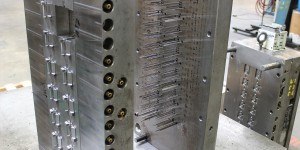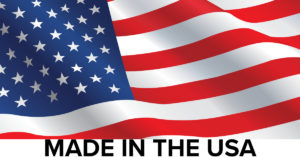 Tool making involves the manufacture and servicing of the mold tools used to make a wide variety of plastic parts. The goal is to provide quality mold tools that produce products that meet or exceed a customer’s expectations. These tools must be designed and built to the highest standards, and they must be properly maintained between runs.
Tool making involves the manufacture and servicing of the mold tools used to make a wide variety of plastic parts. The goal is to provide quality mold tools that produce products that meet or exceed a customer’s expectations. These tools must be designed and built to the highest standards, and they must be properly maintained between runs.
For toolmakers, plastic injection tool making often runs on a “roller-coaster” schedule of busy one moment and slow the next. This is the nature of the industry and successful toolmakers have learned to adapt to these ups and downs. Tools are typically designed in 3D using advanced CAD systems, which cuts down on design times and enables toolmakers to design highly complicated parts.
Modular Inserts comprise a low cost tooling system allows a variety of low and medium volume products to be economically produced without extensively long lead times. Another option ideal for low volume production is the budget mold tool.
There are also steel mold tools, which include hot runner, straight open and shut, triple plate, side action and multi-cavity molds. These days, tool inserts can be designed directly from 3D specs and finished in 7 to 10 days via laser sintering. If time is of the essence, one can go this route.
Today’s design engineers use computerized modeling to simulate the filling, cooling and expected shrinkage for complicated parts. This allows the tool’s design to be refined before tools are actually constructed. It also ensures that the tool will produce a part that meets spec with the best production efficiencies.
In building a tool, it’s often created in different sizes, shapes and optional design features—like inserts, auto-unscrewing and hot runners. Modern toolmakers can provide single- and multi-cavity dies, and entirely interchangeable cavities for standardization and repeatability. Advanced, state-of-the-art tool and die design equipment and software are used in today’s tool making. This includes precision EDM machines, which produce mold cores and cavities to meet the demanding tolerances and production schedules.
Tooling generally falls into several distinct categories. There’s Production Tooling, which provides 1- and 2-cavity production tools for low-volume production needs on a tight timetable. Then there’s Bridge-To-Production Tooling, which is ideal for customers who need the speed of a prototype tool without sacrificing the quality of a production tool. And finally, there’s Prototype Tooling, ideal for customers who need high quality parts for design verification in 1 to 4 weeks.
Tools must be properly maintained via a conscientious preventative maintenance schedule applied to all tools between runs. This keeps tools in their prime condition to ensure consistency during repeat production runs. It also cuts down a customer’s after- care costs.
Custom Tooling at JB Plastics Inc.
At JB Plastics, we work extensively with our customers to incorporate the most up to date advanced tool making processes. Our design engineers and master mold makers can guide you through the tooling process from prototype tooling, bridge-to-production tooling and production tooling. Contact JB Plastics for all your custom mold tooling needs. (714) 361-0260
